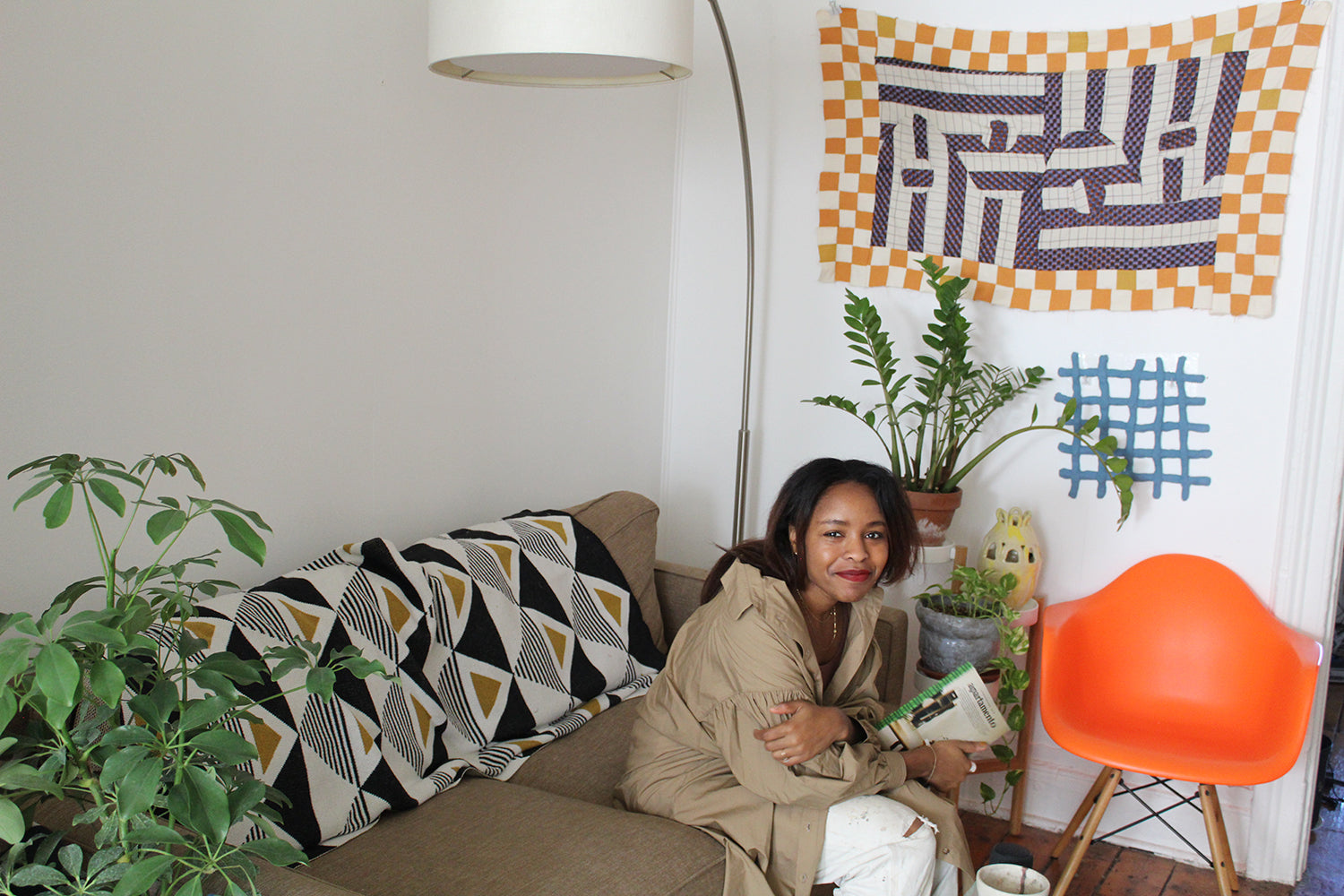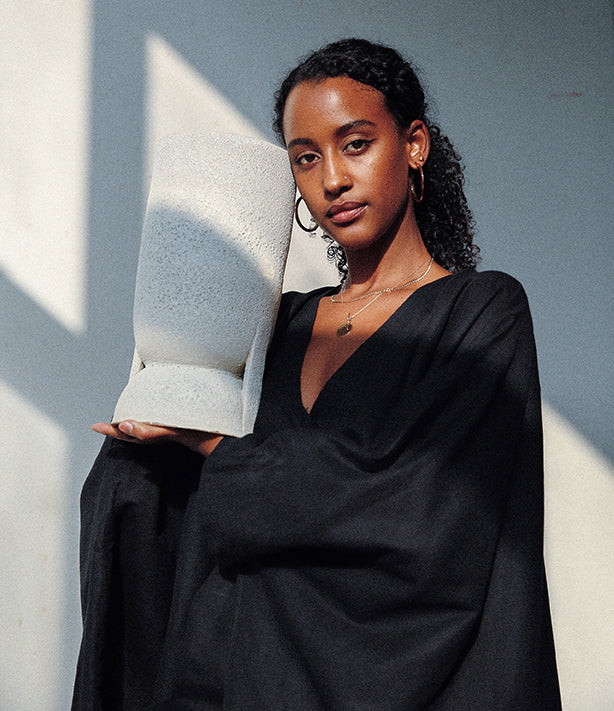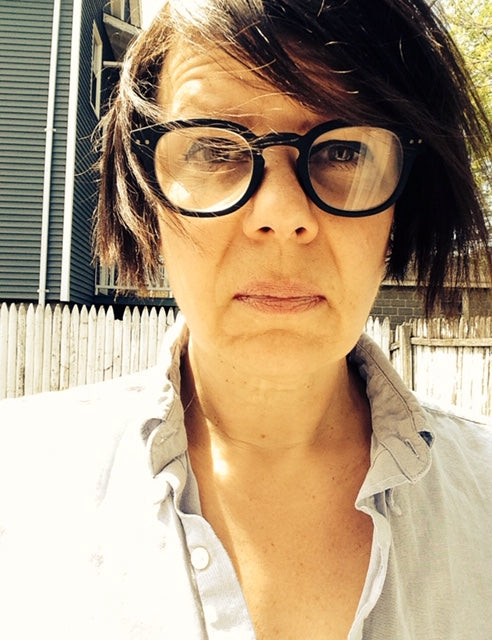The 8 Ball: Sarah Nsikak, La Réunion

Sarah’s goal with La Réunion has always been to share Africa-inspired artwork with sustainability at the forefront. The capsule of Patchwork Dresses made by Sarah for Covet + Lou were created at a time when the coronavirus hit especially hard in New York City. Sarah asked herself, “what can I make that will make me feel good in a time where that seems impossible?”
We are so grateful to introduce Sarah and a special capsule collection of La Réunion Patchwork Dresses to our community at Covet + Lou.

Hi Sarah! How are you doing and how are your day-to-days going in Brooklyn right now?
I have been trying to stay focused and stick to the system I created for myself. My weeks are very full, and I often work into the weekend. I'm working on establishing boundaries so I can begin to take more time for myself.
Can you tell us how La Réunion began?
I have always made little textile art pieces without really sharing them, but I actualized the project La Réunion (named after the island) at the end of 2019. The goal has always been to share Africa-inspired artwork and to do so sustainability. I wanted to be very intentional about introducing clothing into the project, because there are so many brands out there and I didn't want to do it just because I knew how or because it was expected of me. The capsule of Patchwork Dresses was created out of a time of real sadness and grief. CoronaVirus hit hard in NYC and we are confined to our homes. I no longer had a job, and had a lot of time to create something from an honest place. I remember thinking "what can I make that will make me feel good in a time where that seems impossible?" Fashion has this transportive property that can make you feel you're somewhere else or someone else, even on the bleakest day. This is why I knew I'd be making something I could wear.
I reached out to a designer I used to work in production for and asked if she might have any remnants she didn't need. She sent me a box and I'll never forget the feeling of elation I got from that. I was really moved by her generosity and I felt it was so anti-capitalist to be so selfless with her waste. I took that energy into this project and I used what she gave me to make the first dress. I know it's just the beginning - there are so many other stories of Africa that I can't wait to tell through art whether it's wearable or not. I'm dedicating my life to that work because it brings me more joy than anything. I hope it does the same for others!
Did you always know that you wanted to work in the fashion industry?
Any first generation Nigerian American can attest to the fact that you aren't supposed to tell your parents that you want to study textiles or fashion or art. They worked so hard to get to this "land of opportunity", and the expectation is for you to become a doctor, lawyer, or engineer. I wasn't interested in becoming any of those things, but I always had an interest in Psychology. I sort of finessed my way into studying art by pursuing Art Therapy, which I got my Masters in. Thankfully that was aspirational enough for my mother who convinced herself that I was on my way to becoming a PhD certified Art Therapist. After my Master's program in 2014, I started a small business where I was making clothing out of textile waste and upcycling vintage garments. I was trying to preach this message of sustainability to people in Oklahoma who either didn't care or cared just enough to verbally affirm it and move on.The concepts I was trying to spread were fairly new there at that time, and Forever21 was still the most referenced store for clothing. After two years of struggling to have my little company and working full time at a counseling agency to support it, I realized that I didn't have to keep exasperating myself and doing the work of educator and maker at the same time. I was also asked a lot of questions about who I am as a black woman. Many assumptions were made about what I was doing because of my skin color. People tried to barter with me, people asked me to do their alterations, people asked me to give them things for free. It was confusing to me because I didn't have the arsenal of understanding that I have now, but I felt strongly that I needed to be somewhere else. From there I made plans to move to NYC!
What is the inspiration behind your patchwork dresses? What do they stand for?
I first read about the Herero tribe a few years ago, around the time I moved to NYC. I was doing personal research because I felt this persistent nagging frustration that African art was never a point of focus in my studies. Meanwhile, so many artists and designers are inspired by Africa many weren't paying tribute in any way. I looked up textile art by African people, and after some time gasping at the work by the women of Gee's Bend, I stumbled upon images of the Herero women. I couldn't stop searching for more images of them. I was enamoured and also offended that their story was so new to me. I read about how the Germans tried to wipe out their tribe in the 19th century, and how they now wear the reimagined styles of their oppressors. It is a sign of resiliency and it's what black people around the world have been doing since the beginning of time. To make emphatically beautiful something what was initially a symbol of pain and suffering is an act of rebellion and it's a sign of immense strength. Their stories are some of the most powerful and important that I've ever heard in my life. They were transformational for me as an African American woman still searching for a deeper sense of identity.
What do you look for when sourcing your textiles?
Natural fibers, colors that I find interesting (not necessarily beautiful or on trend) and I love finding vintage patterns that never seemed to be popularized.
How do you personally like to wear and style your dresses?
I always have something layered underneath, and I often wear it with something layered on top. I think my favorite way is to wear it with a distressed vintage tee underneath and when it gets cold, popping a crewneck sweater over that. I've also been a big fan of the oversized collar layered under the dress.
Who or what is keeping you inspired these days?
I'm always inspired by films where the styling and cinematography are visually stimulating. I love color play in films. There's a movie called The Green Ray ( Le Rayon vert) by Rohmer and the outfits inspire me. They are simple, timeless, and easy with fun pops of color throughout.
Something you are looking forward to- personally or for La Réunion?
I'm excited to begin collaborating with African artisans based in Africa and hoping this is in the cards for 2021!

SHOP LA RÉUNION



